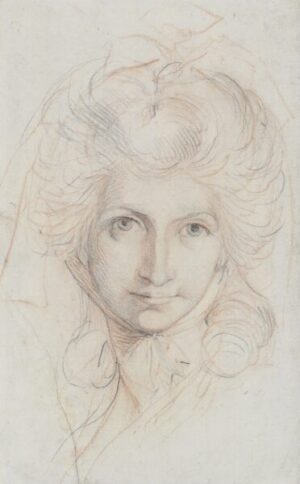Fuseli, Henry (1741-1825)
Fuseli was born in Zurich on 6 February 1741, the second son of the five children of Johann Caspar Füseli and Elisabeth Waser. Although educated as a theologian and ordained as a Zwinglian minister in 1761, Fuseli pursued a wide range of humanist studies, developing an enthusiasm for classical philology under the influence of Johann Jakob Breitinger, and becoming proficient in English, French, and Italian. He was introduced by Johann Jakob Bodmer, the mentor whom he most revered, to Homer, the Nibelungenlied, Dante, Shakespeare, and Milton, later the principal sources of his art. His associations with the Sturm und Drang movement were close.
Forced, with Lavater, to leave Zurich in 1763 after publishing a pamphlet critical of the administration, he traveled in Germany, England, and France, embarking on a literary career. Encouraged by Reynolds in 1768 to become a painter, Fuseli traveled to Italy in 1770 in the company of John Armstrong. He sought inspiration from classical sculpture, Michelangelo, and mannerist art, and, befriended by the Swedish sculptor Johan Tobias Sergel, became the leading spirit of a group of innovative young artists.
Returning to London in 1780, Fuseli established his reputation with The Nightmare. Involved from the outset in 1786 with John Boydell's scheme for employing the most talented artists of the day on a Shakespeare Gallery, he devoted most of his time to paintings of Shakespearean themes until the opening of the gallery in 1789. In emulation of this project, he executed during the 1790s forty-seven paintings for a Milton Gallery in which the work was entirely his. Although many of these works were bought by his principal patron, Thomas Coutts, the exhibitions in 1799 and 1800 were not a public success. Fuseli was elected an Associate of the Royal Academy of Arts in 1788, a full Academician in 1790, and Professor of Painting in 1799; he was obliged to relinquish the latter post after his election as Keeper in 1804, the year in which Benjamin Robert Haydon became his pupil, but the statutes were altered to allow him to resume it in 1810.
Fuseli's relationships with and attitude to women were highly important for his art. His most passionate love was for Anna Landolt, a niece of Lavater, whom he met in Zurich in 1778; but her father refused his suit. He married in 1788 Sophia Rawlins, an attractive young model obsessed with hair and fashion, who was socially and intellectually his inferior; there were no children, but she appears to have satisfied her husband's fetishistic and other desires. Mary Wollstonecraft's passion for him in 1792 was firmly put down by Mrs. Fuseli. Fuseli died suddenly on 16 April 1825, at the home on Putney Hill of Coutt's daughter, Lady Guilford, and was buried in Saint Paul's Cathedral, London. [This is an edited version of the artist's biography published, or to be published, in the NGA Systematic Catalogue]
Showing the single result
